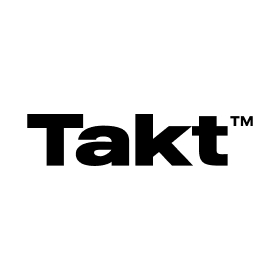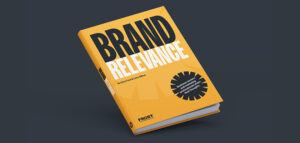
Vintage Equals Value: Aiming Digital Marketing Strategies Towards an Aging Population
Medical advances made in recent years mean that people are living longer, especially in first world countries. In fact, According to the United Nations, the number of people aged 60 years or older is expected to double by 2050, reaching over 2 billion worldwide.
Adapting to this shifting demographic requires digital marketing agencies to use appropriate strategies to engage an increasingly older audience. This is especially true in light of the fact that seniors tend to have more expendable income if they have been saving for much of their lives and their mortgages have already been paid off.
This wealth concentration amongst older people is known as ‘The Silver Dollar’ – and here we’re going to examine strategies to market goods and services to senior citizens to attract some of that spending power.
Delving into the demographic
For the purposes of analysis, let’s assume that we’re talking here about people aged 60 and above. At the younger end of this market segment, some individuals are still in the workforce; whereas those retirees in their 80s and even beyond are more concerned with healthcare spend and associated support services. Understanding seniors’ attitudes to digital-adoption, their diverse preferences and spending patterns is crucial for creating effective digital marketing campaigns.
Relevant revelations
Older adults tend to question things more than youngsters, who often believe everything they see on social media simply because it’s there. Mature audiences, however, value authenticity and relevance when reacting to marketing content. Perhaps age and experience create cynicism, but if an older person thinks that something is too good to be true, their experience teaches them that it probably is.
Accordingly, when marketing products and services related to health, financial savings, retirement travel, and hobbies such as crafting, marketers should create content that is informative, relevant, accurate and above all trustworthy. There’s an old saying that you can’t teach an old dog new tricks – but that could be that they simply don’t feel the need to learn them. Older people tend to be set in their ways, so rather than trying to change what younger people think that seniors should be buying, the best strategy is to find out exactly what seniors want and make it easy for them to obtain those products and services.
Appropriate vocabulary
The tone and language used in marketing to older adults should be respectful and considerate. Avoid acronyms that young people only would understand, and especially ensure that stereotypes about aging are avoided.
Empowering and positive messages that appeal to seniors’ experiences and aspirations are important to promote. For example, stories of active aging and personal achievements, such as an arthritis sufferer using a particular food supplement or medication reaching the summit of a mountain in the Rocky Mountains with their dog or whatever.
Dialogues centering on community involvement can be particularly effective; many older people go out in groups for walking and photography or to view historic buildings etc. In short, telling stories about the achievements of older people and the value of their experience is a good way to engage them.
Technical tribulations
It’s extremely important to remember that websites and apps must be accessible to older adults, many of whom may have visual, auditory, or mobility impairment issues. Using features like larger fonts, high-contrast colors, and voice search options can enhance usability, so long as those voice assistants are efficient. There’s nothing more annoying to an older person than a stack of technology that doesn’t work; after all, seniors are often already cynical about the march of technology for its own sake.
Going back to basics and remembering that the World Wide Web Consortium (W3C) provides guidelines for making web content accessible can be a valuable resource for digital marketers. Accessibility and responsiveness for websites and apps can so often be overlooked amongst those who don’t need glasses or who can text at super-fast speeds.
Also, AI powered voice search optimization can help in engaging older people, as many find it easier to use voice commands than typing. Likewise, obtaining permission for data sourced by wearables that monitor health can be priceless for companies selling wellness products, but opted-in permission is a legal necessity under privacy laws both in Europe and the USA.
Don’t knock ‘the good old days’

When older folks talk about ‘the good old days’ before the internet, it’s important to remember that some things WERE better – less fake news, fewer scams, the ability to be able to go into a high street bank and talk to a real person about negotiating a loan or applying for a mortgage. All these things nowadays are decided by faceless AI and hidden technology – so older folks have a point when they find the use of tech for its own sake to be counter-productive.
Seniors’ socials
Nostalgia marketing—using content that evokes memories and emotions from people’s younger days can appeal very effectively to older people.
So in that regard, while a younger audience may well populate platforms such Instagram and TikTok, older folks tend to be increasingly active on Facebook (FB) and even LinkedIn (LI). LI is especially suitable for those retired business people still looking out for the family firm after they have perhaps handed the company down to their children. And let’s not forget that many LI users could well be retired information technology professionals who aren’t apprehensive of digital transformation.
It goes without saying that marketing strategists should concentrate their efforts towards seniors on FB and LI, with the concept of ‘keeping in contact with family’ squarely in the former audience. For example, enabling gift ideas for grandparents to buy for teenage grandchildren makes perfect sense on FB.
More business-like marketing campaigns for financial products, part-time post retirement work and cruise vacations would appeal to any retired C-Suite execs and retired successful entrepreneurs on LI.
In Summary
As mentioned further above, the ‘Silver Dollar’ is a powerful spending pool not to be underestimated. It can be tapped into effectively by digital marketers, but without taking into consideration the relevancy, content, language and removal of technical barriers – marketers’ efforts can fall on stony ground.
Only by understanding the unique needs and preferences of older adults can agencies aim their strategies to engage this growing market. Authenticity, honesty and valuing older people’s skills are crucial. Just because someone may have difficulty expressing themselves due to age-related impairment doesn’t mean that the person’s intelligence and experience is devalued, nor their ability to change the way they look at the world.
Respecting seniors for the things they once achieved is key to appealing to their sense of worth. In the final analysis, many societies revere older people for their wisdom and experience. Ignoring such respect and assuming that older peoples’ opinions are less valuable than those of youngsters could be a very expensive mistake for digital marketers.




















